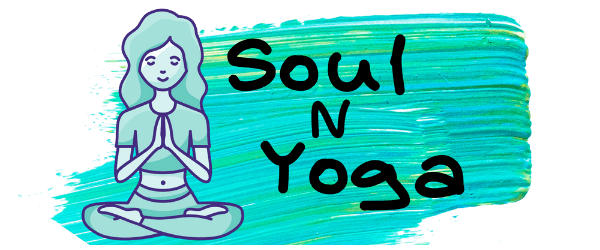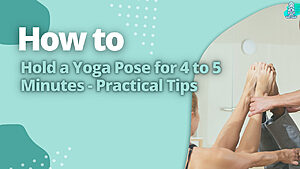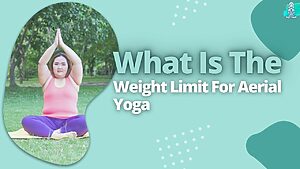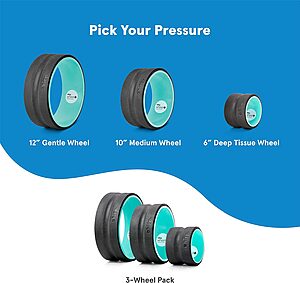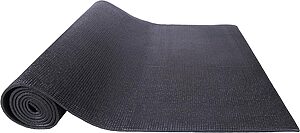Yoga is a great way to stay healthy, but did you know it may also help lower blood pressure? This can be especially helpful if you have high blood pressure.
In this article, we’ll explain how yoga affects blood pressure and does blood pressure increase after yoga.
Key Takeaways
- Yoga can help to lower blood pressure by promoting relaxation and reducing stress.
- Yoga may also help improve the nervous system’s function, which can help lower blood pressure.
- Yoga poses that help lower blood pressure include the reclining bound angle pose, the supported shoulder stand, and the fish pose.
- Before beginning a yoga practice, it’s crucial to speak with a doctor because certain positions might not be appropriate for those with high blood pressure.
- People with high blood pressure should avoid yoga poses that involve lying on the stomach or head, as these poses can increase blood pressure.

Does Blood Pressure Increase After Yoga
So what does the research say about yoga and blood pressure? It depends on the type of yoga you do.
It’s important to note that yoga is not a cure for high blood pressure. And doing it on its own won’t necessarily lower your BP (although some studies have shown that it can).
But if you’re already practicing yoga regularly as an adjunct treatment in combination with other medications and lifestyle changes—like eating well, exercising regularly, and getting enough sleep—it can help lower your blood pressure over time.
In one 2014 study published in Annals of Internal Medicine, researchers found that older adults who participated in a moderate-intensity Viniyoga class twice a week lowered their systolic BPs by an average of 5 mm Hg after 12 weeks; those who participated in a gentle Hatha style class saw no significant change over the same period.
Regular Yoga Practice Can Help To Lower Blood Pressure

Yoga can help to lower blood pressure. A recent study found that people who practiced yoga regularly experienced a drop in their systolic and diastolic blood pressure numbers by an average of 5 points each.
This was significant, but the researchers stated it is “clinically relevant.” They also noted that with consistent yoga practice, participants saw greater improvements than those who simply took anti-hypertensive medications.
In addition to lowering your blood pressure, regular yoga practice can help with other factors that contribute to high blood pressure:
- Stress reduction.
- Anxiety reduction (both of which raise heart rate).
- Inflammation reduction (linked to hypertension).
- The promotion of relaxation (which has been shown time and time again to have beneficial effects on cardiovascular health).
A Study Found That A Single Session Of Yoga Can Help To Reduce Blood Pressure In People With Hypertension
A single yoga session can lower blood pressure in those with hypertension, according to a University of California, Los Angeles study.
The researchers analyzed 40 people diagnosed with hypertension and randomly assigned them to yoga or a control group.
The participants in the yoga group were then given an hour-long session of Hatha yoga, which is one of many types of yoga but is considered one of the most basic and easiest to learn.
The researchers found that after just one hour, those who practiced Hatha yoga experienced lower blood pressure than those who did not practice it at all (by roughly five mmHg).
Yoga May Work By Decreasing The Sympathetic Nervous System Activity And Increasing Parasympathetic Activity
Let’s now discuss the specifics of how yoga functions. The sympathetic nervous system activates the fight-or-flight response, which raises blood pressure. (If you went from 0 to 60 in less than five seconds, you might have experienced this.)
The rest-and-digest response, which reduces blood pressure, is brought on by the parasympathetic nervous system.
Yoga can help to activate the parasympathetic nervous system by slowing your breathing and heart rate and reducing stress hormones like adrenaline and cortisol.
It also improves flexibility and strength, reduces muscle tension, increases lung capacity, calms nerves in muscles, and helps you focus on breathing exercises rather than stressful thoughts or emotions. In short: it helps you chill out.
Yoga May Also Help To Lower Inflammation, Which Can Contribute To High Blood Pressure
Although it can be chronic, inflammation is a normal reaction to injury or infection. Heart disease, arthritis, and cancer have all been related to persistent inflammation.
To its calming benefits, yoga also helps you relax your muscles and breathe deeply. This relaxation can help lower blood pressure by increasing the amount of oxygenated blood reaching the heart and brain.
Yoga’s focus on breathing may also help reduce stress-induced high blood pressure in people with post-traumatic stress disorder (PTSD).
It Is Important To Talk To Your Doctor Before Starting A Yoga Practice, Especially If You Have High Blood Pressure
If you have problems with your blood pressure, you should consult your doctor before beginning a yoga practice.
It’s possible that the results of your blood pressure monitoring could show that you should avoid certain poses or types of breath work.
Before starting a yoga practice, check with your doctor if you are pregnant and have high blood pressure.
Some forms of yoga can create too much stress on the body during pregnancy and lead to preterm labor or miscarriage.
How Does Yoga Affect Blood Pressure?
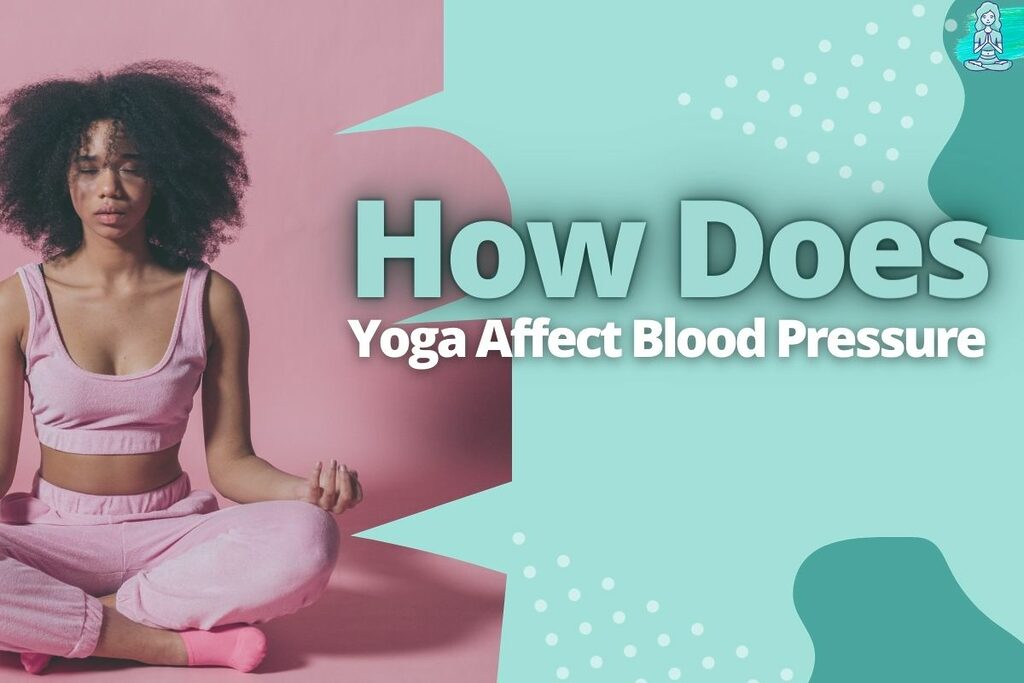
How does yoga affect blood pressure? It’s not just the poses. Yoga is a practice that helps you reduce stress, increase flexibility and strength, and improve circulation to your muscles.
These factors have been shown to lower your blood pressure over time. If you want to know how yoga affects blood pressure, look no further than these four ways:
- Stress reduction: The most obvious benefit of practicing yoga is that it helps reduce stress—and we know that high levels of chronic stress can cause or contribute to high blood pressure in some people. When you’re feeling stressed out, try taking some deep breaths before heading into downward dog or child’s pose—it may help calm you down enough to focus on other things besides your next deadline or project at work.
- Increased flexibility: Another way yoga affects blood pressure could be through increased flexibility throughout the body—which means less strain on joints and other tissues as they move through their normal range of motion when performing certain poses (such as a downward-facing dog). This could also help with constipation since diets rich in whole grains also increase circulation throughout our bodies’ systems, which means better nutrient absorption.
What Are The Benefits Of Yoga For Blood Pressure?
Now, you may be wondering: What are the benefits of yoga for blood pressure?
I mean, it’s not like there’s any scientific evidence that connects these two things.
But it turns out there is!
A meta-analysis published in 2007 looked at thirteen studies and found that yoga can help lower blood pressure by an average of 4.5/2.6 mm Hg (systolic/diastolic).
The researchers also found that yoga reduces stress and increases flexibility and strength—which may be beneficial in preventing injuries due to overexertion during exercise.
Are There Any Risks Associated With Yoga And Blood Pressure?
Yoga is a low-impact activity that is generally safe for most people. However, suppose you have high blood pressure or any other medical condition that requires monitoring. In that case, you must talk to your doctor before starting a yoga practice.
There are also a few specific poses that can be risky for people with high blood pressure, so it’s important to consult with your instructor before attempting any of the following:
- Pavanmuktasana (fetal pose): This pose is often used as an opener in yoga classes and can cause significant blood flow restriction in the lower extremities. If you have high blood pressure, avoid this pose.
- Uddiyana Bandha (upward-facing dog): This posture is known to cause mild blood pressure elevations and can be dangerous for people with uncontrolled hypertension.
- Savasana (corpse pose): People with a heart attack or other cardiovascular problems should avoid this posture because it can increase the risk of arterial spasms.
Conclusion
Yoga can benefit many other health conditions, including heart disease and Type 2 diabetes.
Some risks are associated with yoga, such as injuries from falls or overexertion; however, these can be minimized by practicing safely and being aware of your physical limitations.
Yoga can be a great way to relax and de-stress, but for some people, it can also increase blood pressure. Before beginning a yoga practice, discuss with your doctor if you have high blood pressure or are at risk of getting it.
Other articles on our website discuss related topics, such as the benefits of yoga and how to start a yoga practice.
Frequently Asked Questions
How long after starting yoga will I see an increase in my blood pressure?
It is difficult to say how long it will take to see an increase in blood pressure after starting yoga, as it may vary from person to person and even change over time. However, if you have high blood pressure or are at risk of developing the condition, speak with your doctor before starting a yoga practice.
Will my blood pressure continue to increase the longer I do yoga?
It is difficult to say, as the effect of yoga on blood pressure may vary from person to person. However, if you have high blood pressure or are at risk of developing the condition, speak with your doctor before starting a yoga practice.
Can doing yoga too often lead to high blood pressure?
Additionally, it might be affected by things like nutrition, age, and health history. However, if you have high blood pressure or are at risk of developing the condition, speak with your doctor before starting a yoga practice.
What are some signs that I should stop doing yoga because my blood pressure is getting too high?
It’s probably time to stop practicing yoga if you notice any of the symptoms below:
-A significant increase in your blood pressure readings
-Indicators that your blood pressure is out of control (like chest pain, shortness of breath, or dizziness)
If you have difficulty controlling your blood pressure while practicing yoga, speak with your doctor. In some cases, adjusting the amount or type of exercise you do may be necessary to help lower your blood pressure.
My name is Mugen Seki, and I’m a painter and yoga enthusiast who is passionate about bringing together art and exercise in ways that help people connect with their inner selves. When I’m not painting, I’m practicing yoga. And when I’m not doing either of those things, I’m usually thinking about them.
- How to Hold a Yoga Pose for 4 to 5 Minutes – Practical Tips
- A Guide to Finding the Perfect Yoga Mat for Carpet Floors
- Can You Add Yoga To Fitbit Luxe (Unlock the Power)
- Can You Add Yoga To Garmin Vivoactive (Yoga On The Go)
- Is Aerial Yoga Dangerous (The Scary Truth)
- What Is The Weight Limit For Aerial Yoga (Exploring The Possibilities)
